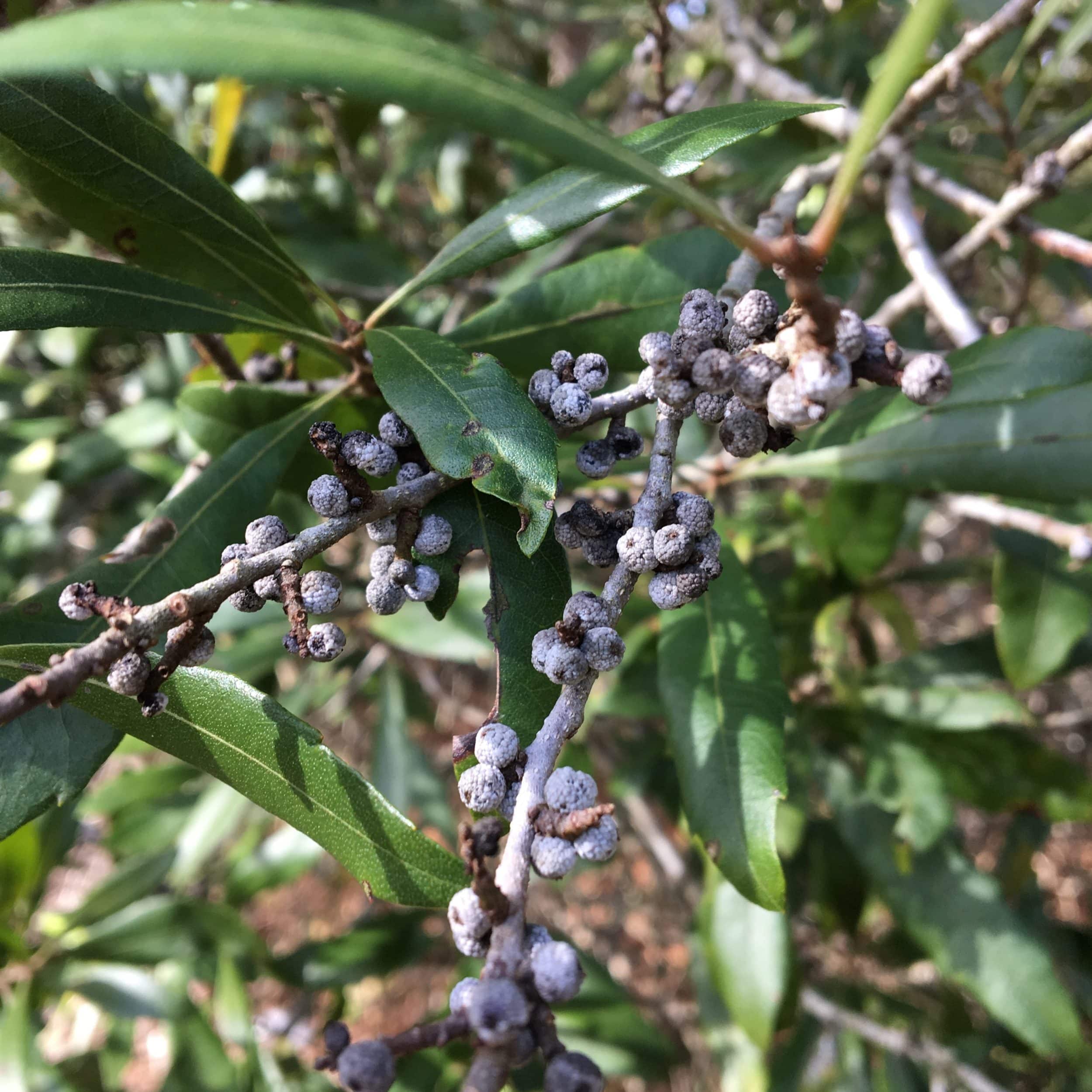Wax Myrtle is one of my favorite plants. It is one of the most common shrubs across our landscape, able to grow in dry and wet soils, referred to as facultative (adaptable). It has so many uses for humans and wildlife, that it is hard to cover them all in a short story, but I will do my best.
Native Americans had many uses for Wax Myrtle, using various concoctions to treat pain, headache, sore throat, worms and dysentery. They also rubbed their skins with the leaves or burned them to repel mosquitoes. Cajuns, and I suspect other cultures, would place branches in dog pens or under beds to ward off fleas.
This property is the result of insecticidal chemicals found in the many tiny indentations on both surfaces of the leaves – seen as tiny amber dots, best viewed by tilting the leaves in full sunlight. This chemical also gives the leaves their strong odor, prominent when crushed, that led to their use as a pot herb or to make tea. A local chef friend has used fresh branches with leaves to smoke food.
As for the wax part of its name, the thin, blueish-waxy coat on berries is used in bayberry candles, adding a distinctive odor. The wax is also an important source of fat for many birds in winter, like Tree Swallows, Yellow-rumped Warblers, and many of our common resident birds, that seek them out with gusto, surely explaining the plant’s abundance. This plant is dioecious – sexes on separate plants – so berries only occur on female plants.
For some of us, this abundance is a nuisance, as Wax Myrtle can be abundant and hard to manage if the goal is a lawn or open spaces. But if privacy is a goal, this plant makes a nice, thick green privacy screen. It is evergreen and grows rapidly. It can also be trimmed regularly and even shaped if desired. I have seen Wax Myrtle shaped as a box hedge or with round tops. As a native plant, it is adapted to local soil and moisture conditions, making it a low-maintenance landscape plant.
As with many of our native plants, we have moved away from using them as Native Americans taught us to do. There is a tendency to shun reported medicinal uses or even uses as foods. Surely any plant should only be used based on knowledge of its safety. But we have become a culture that only eats foods from the grocery store, or vegetables grown in our gardens.
Foraging was a way of life for Native Americans as well as European, Asian, African, Polynesian, and all other native cultures across the globe, in the not-that-distant past. These same plants and animals are still useful today. We have been encouraged or even warned to stay away from them, often under the guise of them not being safe. Wax Myrtle is one of the most versatile plants in eastern North America, and deserves another chance to enhance our lives, if not as an ingredient in our cooking, at least as part of our landscape, for our enjoyment, and in support of the birds and wildlife we value.
Hope to see you in our great outdoors!





